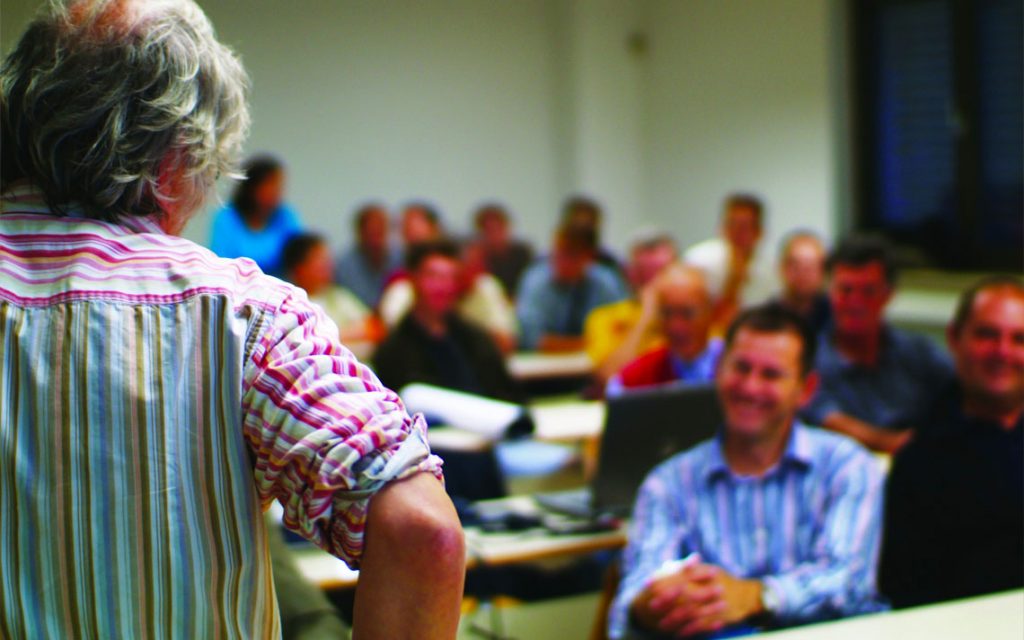Osteopathic Education
- News
-
May 20
- Share post

I have reviewed the articles on osteopathic education and am well aware of the current trends in osteopathic training. I experience a great deal of confusion when I see that, in all specialty training except osteopathic theory and methods, students learn to analyze clinical problems the way the specialist would. In osteopathic manipulative training, they learn a regional approach and a few techniques but not how to analyze the entire body’s pattern to solve the structural problem the patient’s physiology presents. I experience a great deal of sadness about this and wish to have some clarity on this topic by anyone who understands the rational for teaching a regional musculoskeletal analysis unlike the ways the OMM specialists analyze musculoskeletal problems.
Because a subset of patients will actually have musculoskeletal input amenable to the regional analysis, students will doubtless experience a limited degree of success or a high degree of failure. With no other analytical skills taught them to solve the problem, many simply give up believing that OMT just doesn’t work or only works in certain select cases. Others may spend the next ten or fifteen years wandering around the fascial planes until they figure out a structural analytical model that works for them clinically. How far ahead all our students would be if we started them out thinking osteopathically like our successful OMM specialists do.
In the article that follows, I wish to credential my opinion by :
- speaking of my training with the recognized masters in osteopathic manipulative medicine
- my personal associations with OMM faculty at the schools
- my decades long experience with students, and
- an example of osteopathic analysis and thought that illustrates the failure of the current teaching method to adequately prepare the student for the osteopathic clinical challenges ahead.
I am hopeful that this letter will spark a dialogue that will eventually lead to the realistic betterment of our students’ education and their clinical success.
Osteopathic Training
During my almost thirty-five years of training and clinical experience, I have had the privilege of studying with many of those highly recognized D.O.’s known for their clinical acumen and results. I have experienced first-hand their care upon my own body. I have observed them treating other patients during a hands-on preceptorship. They and I have had numerous long discussions aimed at elucidating their analytical processes. Some of those below have also trained me during my undergraduate years at KCOM.
I have listed below their names and dominant osteopathic paradigm:
- Viola Frymann (cranial approach)
- Edna Lay (cranial approach)
- Ann Wales (cranial approach)
- Alan Becker (cranial approach, fascial release)
- Rollin Becker (cranial approach, fascial release)
- Paul Kimberly (cranial, muscle energy and hvla)
- Bernard Teepoorten (hvla)
- Gordon Zink (lymphatic model)
- Perrin T. Wilson (lvla, articulatory model)
- Robert Fulford (percussion, articulatory, cranial)
- Larry Jones (counterstrain)
Although their osteopathic paradigms and treatment approaches varied widely, each practitioner analyzed the entire musculoskeletal system and chose the most important place to start. They would sequence the treatment until they were satisfied that the body had received all the treatment it could handle or the job was done for this treatment.
Osteopathic Faculty as Friends
Many of my osteopathic friends serve or have served as faculty and chairs of OMM departments in our schools. They tell me that they are told to teach to the test (COMLEX). They are told to teach a regional musculoskeletal analysis with four or five different ways to fix somatic dysfunction discovered there. During their practice careers, none of these faculty members analyzed and treated patients using the current regional approach the faculty were told to teach the students.
I ask them why they don’t teach the students total body analysis and sequencing. They all give me the same response — a shrug of the shoulders, a knowing sad smile, and the statement that OMM faculty must follow what the administration dictates osteopathic students must learn. Currently, this is this regional approach with four or five osteopathic paradigms to fix somatic dysfunctions found.
The only radiant exception to this regional approach was Ed Stiles’s OMM program at the Pikeville College of Osteopathic Medicine. Ed trained students to analyze osteopathically exactly as he did when he was in private practice. His program also integrated the other specialty disciplines. At AAO Annual Convocation, the Pikeville students were always light-years ahead of the other students in their ability to analyze, treat and solve musculoskeletal problems. The Pikeville students often had jobs waiting for them locally in MD’s offices. These MD’s were hungry for the kind of osteopathic contribution the new graduates could make to their patients’ care. With a changing of the OMM guard at Pikeville, the course is now back to training students along the regional non-integrated lines.
Experience with Students
Through my extensive and varied experiences with D.O. students, I have gleamed what their training was all about and how effective their learned methods are at solving the osteopathic manipulative portion of a patient’s clinical problems.
In the last ten years or so, I have visited at least six of our schools performing weekend training sessions for hundreds of students in the NeuroFascial Release Paradigm as part of the AAO visiting clinician program. In my office, I have trained over 200 preceptees from many different osteopathic colleges. I have spent many hours with students at the AAO convocation listening to their views on their education. Thus, I feel I have some experience with osteopathic student education to have formulated an opinion of its process and effectiveness.
Three decades of training students have told me they have been taught the same approach to osteopathic analysis. Although called by different names at different times, the training ends up with the same outlook. The student looks at the area of the chief complaint, corrects a local problem then wanders around the body fixing this and that until the treatment time is up. His knowledge of living human anatomy is weak and his integration of osteopathic principles with other medical disciplines pretty much non-existent.
When I ask students how they think through the problem, they don’t have a method except “find it, fix it, leave it alone.” The osteopathic specialists I’ve known understand this nostrum a little differently. The osteopathic idea behind the “find it” is to “find” the “it” that needs to be “fixed” after “the body functions as a whole” analysis. Otherwise, as A.T. Still said (paraphrased) the physician is just “wiping the engine.”
Students can surely help some patients using their current methods, as some patients’ problems will simply be regional. When the method fails is when the student is at a loss to find out what to do next. However, this current regional method misses the clinical mark as well as the “body functions as a unit” principle. The regional method is not how the founding OMM specialists analyzed and treated their patients’ musculoskeletal problems. Regardless of the osteopathic paradigm he practices, the OMM specialist evaluates the body according to his system and chooses the place to start, then the next place to treat and so on until the job is done for that visit.
A Clinical Example
Here is a common example from my office experience. A patient has sub occipital pain and a headache. The student examines the head, neck and upper thoracic area. He finds the relationship between the Atlas and Occiput to be amiss, according to whatever paradigm he uses. He corrects the somatic dysfunction locally using one of the five methods he was taught. If the Atlas and Occiput somatic dysfunction is a local phenomenon, the regional approach works. The somatic dysfunction resolves often taking the patient’s complaint with it. When Atlas and Occiput somatic dysfunction is part of a bigger strain pattern, the regional approach fails. The patient will not improve and the student has not the training to know how to look for what to do next and how to find the underlying cause.
Recently, an AZCOM preceptee and I had a patient with this very kind of Atlas and Occiput problem. The student performed a regional evaluation, corrected the Atlas and Occiput somatic dysfunction. Upon re-evaluation, the somatic dysfunction was just as it was before the correction. It was as though nothing had been done and the student was left with the question, what to do next and why. His training gave him no method to find the answer to this functional problem.
After a total body fascial strain evaluation, we came upon the left flexed talus (an old ankle strain, the cause of the fascial pattern leading to the cervical somatic dysfunction). When we corrected the talus (the cause), the Atlas and Occiput Somatic dysfunction (the effect) immediately and spontaneously resolved with no action needed on our part.
This case demonstrates the osteopathic principle of “the body functions as a unit.” It also means the body must be analyzed as a unit. Analysis is the why to do what, the technique is what to do for the why. Our current crop of OMM students learns how to fix somatic dysfunction without an adequate why to fix that particular somatic dysfunction except because somatic dysfunction is there.
Undergraduate Osteopathic Specialty Training is Unlike Other Undergraduate Specialty Training
During osteopathic medical training, students are taught to examine and prescribe treatments along the guidelines of the specialty they are studying. These guidelines reflect the way specialists actually practice at the time — all except in osteopathic theory and treatment, that is. For example, in the study of neurology, a student is taught a neurological exam similar to the way a neurologist might perform one as he was thinking through a case.
If a patient has a numb first big toe, the student (following neurological guidelines) would be taught to examine the nervous system including the lumbar spine (some two and half to three feet away) and beyond, looking for causes. He would not be taught a regional approach (as in osteopathic manipulative training) to examine just the big toe, foot and ankle and calf, regionally, for a cause of the big toe numbness.
The body operates as a unit holds as well for neurology as well as for osteopathic manipulative treatment. The students’ neurological exam and training reflect how the neurologist would actually approach the problem in a real life situation. The student needs the same kind of real world kind of training in osteopathic manipulative medicine.
Conclusion
Unlike training in other specialties, the current osteopathic manipulative training does not reflect how osteopathic specialists practice. Therefore, it is not and cannot be as clinically effective as the methods osteopathic specialists use. This leads to student discouragement and later, wholesale abandonment of the osteopathic manipulative approach because, in the students’ hands, it just doesn’t work.
Let’s let our OMM professors, seasoned by years of clinical experience and successful musculoskeletal analysis, teach what they know about osteopathic analysis and treatment sequencing. It is time we give our students the real stuff, for their professional and their patients’ satisfaction.
